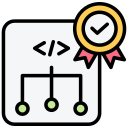Common Pitfalls—and How to Avoid Them Early
Unreviewed apps can duplicate data and confuse teams. Create a lightweight intake form and a shared catalog. Visibility turns ‘shadow IT’ into supported innovation where good ideas get noticed, improved, and reused.
Common Pitfalls—and How to Avoid Them Early
Resist polishing edges no one asked for. Ship the simplest working version, gather reactions, then enhance deliberately. One team deleted half their fields after users admitted they never looked at them.









